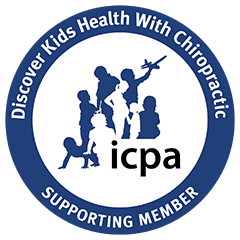When you are expecting a baby there are numerous decisions to be made. What kind of crib do I want? Who will my pediatrician be? Do I have a birth plan in place? What kinds of things do I need to put on my registry? Should I breastfeed? Today’s blog answers some of the questions you may have around breastfeeding, the benefits of it plus some tips to overcome some common problems.
Abundant Benefits
Every year more scientific evidence is gathered to prove what many people already know: a mother’s milk is the best food for her baby. In March of 2012, the American Academy of Pediatrics confirmed its recommendation that mothers breastfeed for at least and “as long as mutually desired.” A mother’s milk alone provides all the nutrients necessary for a baby’s physical and mental development for at least six months, with the added benefit of natural immunity against numerous diseases.
Studies have proven that breastfed babies experience fewer incidents of:
- Ear infections
- Colds and upper respiratory infections
- Allergies and asthma
- Diarrhea or gastrointestinal disease
- Childhood lymphoma
- Sudden Infant Death Syndrome (SIDS)
The facts are that the breastfed child has a stronger immune system which leads to an overall happy and healthier child.
Mom also benefits from breastfeeding her child. She will experience:
- Decreased risk of breast cancer
- Easier recovery from delivery
- Financial savings
The Time Factor
Although it is uncommon for North American children to be nursed past infancy, the worldwide average for weaning is 4 to 5 years of ago. The World Health Organization advises breastfeeding until at least 2 years of age and the American Academy of Pediatrics advises exclusive breastfeeding for six months with ongoing nursing until 12 months, and then continued nursing for as long as the mother and child want.
Overcoming Potential Problems
Breastfeeding is not without its difficulties. Although approximately 75% of newborn infants initiate breastfeeding, several factors can make breastfeeding feel like “mission impossible”, the first of which is an improper latch.
Breastfeeding should not be painful as this is a sure sign that the baby has not properly latched on. This is a common problem. Although nursing is instinctive, how to latch on is not and may require a little time and patience during the first few attempts.
A hungry newborn will root (or move its open mouth) toward a finger or knuckle that is gently brushed against its cheek. This is the perfect time to place the infant on the breast. Here are some tips to help you:
- First, take the baby into your arms with its head being supported in the crook of your right arm making sure that baby’s left arm is tucked under your arm. This position will allow the baby to be tummy to tummy with you.
- Taking your left hand, gently press the right breast between your index and middle finger. This will flatten the breast a little and make it easier for the baby to take into its mouth.
- Finally, wait for the baby to open its mouth wide, and then lift the baby up onto the breast. The baby will take a large portion of the areola/breast into its mouth and begin nursing.
If this is painful, the baby is not properly latched and you should try again. Start by placing your finger between the baby’s lips and the breast. This will break the suction and allow you to remove your breast without additional pain.
There are also a variety of holds that may help you achieve a better latch. Some mothers find that holding the baby tucked under their arm like a football with the baby’s head resting in their hand is more comfortable. Some prefer side lying in bed or on the couch with there babe. Remember, there is no right or wrong way to breastfeed; find a latch that works for you and your baby.
If breastfeeding is still painful after multiple attempts to properly latch, take a moment to speak to speak with Dr. Elyssa. She has a list of wonderful lactation specialists in the Boulder area to help moms find ease with breastfeeding. There may also be a physical issue such as a tongue or lip-tie that can also be affecting latch. A specialist will be able to help you rule out all possible causes.
Surviving Thrush
One of the most painful problems to overcome with breastfeeding is thrush. This common disorder is caused by a yeast infection in the infant’s mouth that will transfer from the mother’s nipple to the baby’s mouth and back. Since it is a yeast infection, most obstetricians and pediatricians will attempt to treat it with oral yeast medication. The problem with this solution is that these are chemicals being transferred to the baby through the mother’s milk.
Mothering Magazine offers several natural and holistic solutions to this frustrating condition.
- Wash the breast with a vinegar solution of ¼ cup vinegar to 1 cup water. It’s important not to wash off the vinegar solution but to let it air dry. This must be done 4 times a day. If the baby is resistant to the new taste, you can lower the vinegar to as low as 1 teaspoon of vinegar for baby to be able to tolerate it.
- Another treatment recommendation is to increase vitamin C consumption. There are also probiotics that are formulated for both mom and baby that can be beneficial. Ask Dr. Elyssa her favorite nutritional supplement recommendations.
The Chiropractic Factor
Dr. Elyssa is here to support you and your family through your breastfeeding journey. A newborn that can not latch, refuses to suck, clamps down too fast or is not maintaining an open mouth may be suffering from an upper cervical subluxation and should be evaluated. If your newborn is showing any of these signs or symptoms, please contact Dr. Elyssa today to schedule a pediatric chiropractic screening.
If after all attempts to breastfeed have been made and an alternative form of feeding is best, don’t be discouraged. Weston A. Price’s website has a healthy alternative to breast milk. If you are interested in learning more about these alternative forms, ask Dr. Elyssa for more information.
To learn more about the benefits of chiropractic care and the benefits of making it part of your family’s wellness lifestyle click below to schedule a complimentary consultation with Dr. Elyssa today.



